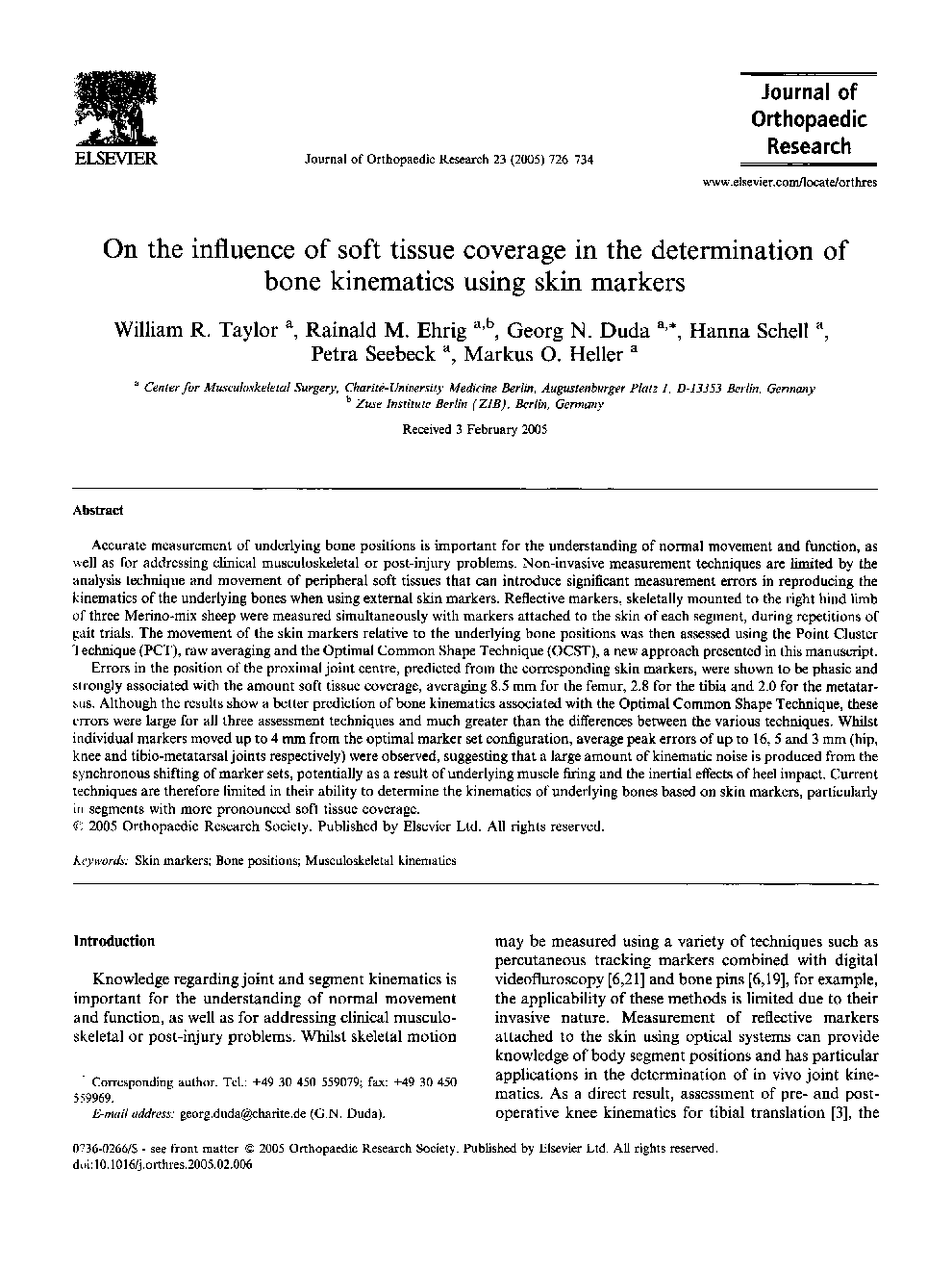| Article ID | Journal | Published Year | Pages | File Type |
|---|---|---|---|---|
| 9353928 | Journal of Orthopaedic Research | 2005 | 9 Pages |
Abstract
Errors in the position of the proximal joint centre, predicted from the corresponding skin markers, were shown to be phasic and strongly associated with the amount soft tissue coverage, averaging 8.5Â mm for the femur, 2.8 for the tibia and 2.0 for the metatarsus. Although the results show a better prediction of bone kinematics associated with the Optimal Common Shape Technique, these errors were large for all three assessment techniques and much greater than the differences between the various techniques. Whilst individual markers moved up to 4Â mm from the optimal marker set configuration, average peak errors of up to 16, 5 and 3Â mm (hip, knee and tibio-metatarsal joints respectively) were observed, suggesting that a large amount of kinematic noise is produced from the synchronous shifting of marker sets, potentially as a result of underlying muscle firing and the inertial effects of heel impact. Current techniques are therefore limited in their ability to determine the kinematics of underlying bones based on skin markers, particularly in segments with more pronounced soft tissue coverage.
Keywords
Related Topics
Health Sciences
Medicine and Dentistry
Orthopedics, Sports Medicine and Rehabilitation
Authors
William R. Taylor, Rainald M. Ehrig, Georg N. Duda, Hanna Schell, Petra Seebeck, Markus O. Heller,
